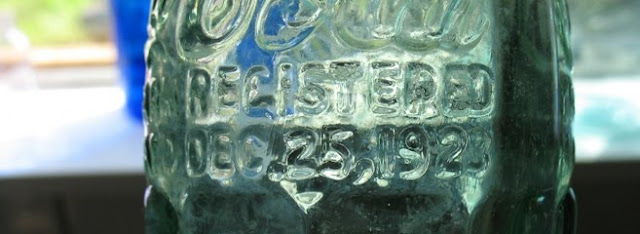This got me thinking. I definitely don't want to lug 5 gallon buckets of water through our house to the yard, but our tub is a long way from the hot water heater, couldn't we collect the "warming up" water in a small bucket and use it to flush the toilet? The toilet is right next to the tub.
And so began our adventure in water recycling. The first thing we learned was that we couldn't flush the toilet efficiently by just pouring water into the bowl. So Ted rooted around in the garage and located a bilge pump. The bilge pump went into a reservoir in the end of the tub to which we added water collected in bowls from the sinks and tub. A tube on the bilge pump went to the back of the tank. By pumping the bilge pump when we flushed the toilet, we were able to replace some of the water going into the tank. But pumping the bilge pump was awkward and hard on our hands. Our toilet uses 1.6 gallons a flush, and we figured out we were only putting in 0.5 gallons with the bilge pump. But at least we had proof of concept.
Next we turned off the water at the tank supply hose and pumped all the water into the tank from the reservoir. Waaay too much work. So Ted went to Camping World and bought a DC pump ($75 pus tax, could probably be had for less). He hooked this up with a switch and a battery and we were able to let the pump do the work. Next step was to hook up the battery to a transformer we plugged into an electric outlet, so we didn't have to worry about recharging the battery. We kept knocking the switch on/off junction box off the toilet tank, so the next improvement was putting the battery in the cabinet that is over the back of the toilet and fastening the switch junction box to the bottom of the cabinet. This worked out great. Flush the toilet, turn on the switch, watch till the water in the bowl was at the correct level, turn off the pump. We fastened a piece of window screen over the hose end in the reservoir to make sure we didn't introduce crumbs that would keep the flapper from closing in the tank. Plus we filtered all the water that went into the reservoir through a grease screen.
One drawback to the whole system is that the pump is actually a bit slow. We have to watch the fill level in the bowl and turn off the switch when the water level looks about right. The toilet mechanism has a special hose that fills the bowl while water is running into the tank. With our wastewater system, we had to run the pump until the the tank water overflows the standpipe and fills the bowl. More than once we walked off while the fill was going on with the intention of coming right back, but forgot and drained our reservoir. So Ted began to talk about installing a float switch that would turn off the pump automatically.
The problem was that the float switch amperages were too low to run the pump. A conversation with our brotherinlaw brought the solution to this problem. He took Ted down to the autopart store and they bought at $5 RS44 accessory relay and a $5 RS40 wiring socket. Ted bought a 100V DC vertical water level sensor fish tank aquarium floating switch ($5 from Sears!!). Out to the garage again and he fashioned a piece of plastic into a holder for the float switch. He wired the float switch before the relay. The float switch activates the relay and the relay activates the pump.
 |
| Reservoir in tub on left with supply hose that runs to pump, pump on floor by toilet with hose and old water filter spigot to direct inflow to back of toilet tank. |
 |
| Switch to pump and battery power supply for pump. |
 |
| Water inlet from pump top left and float switch (tiny white thing) in black plastic holder upper right. |
Now the whole thing is pretty painless. As soon as you flush the toilet, the water level in the tank drops, and the float switch triggers the pump. Water fills the tank from the PVC fitting in the center, and a small hose from the PVC fitting goes into the standpipe to fill the bowl.



No comments:
Post a Comment